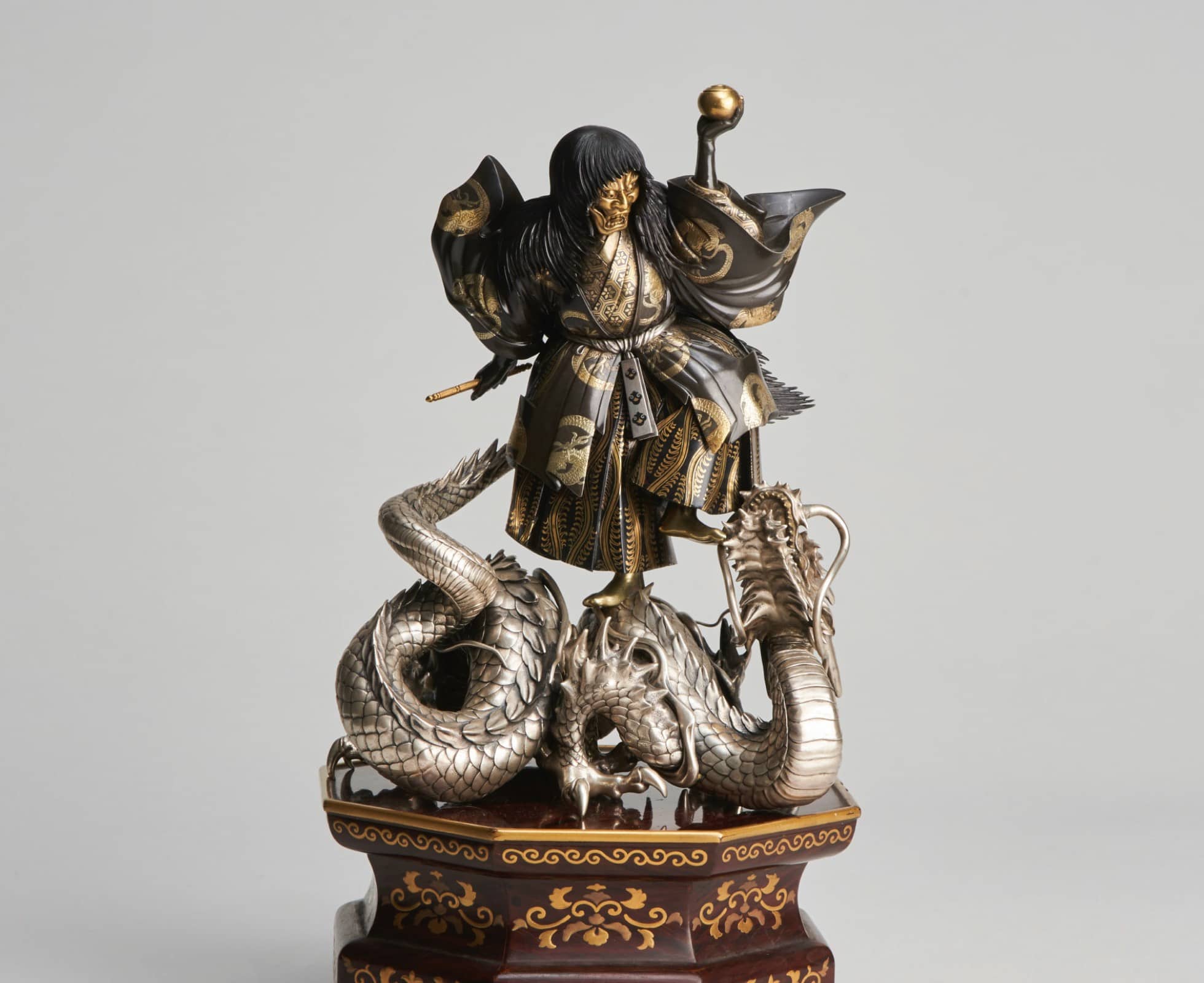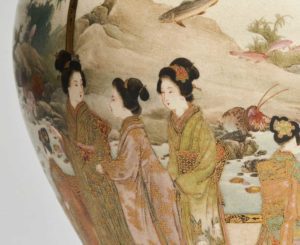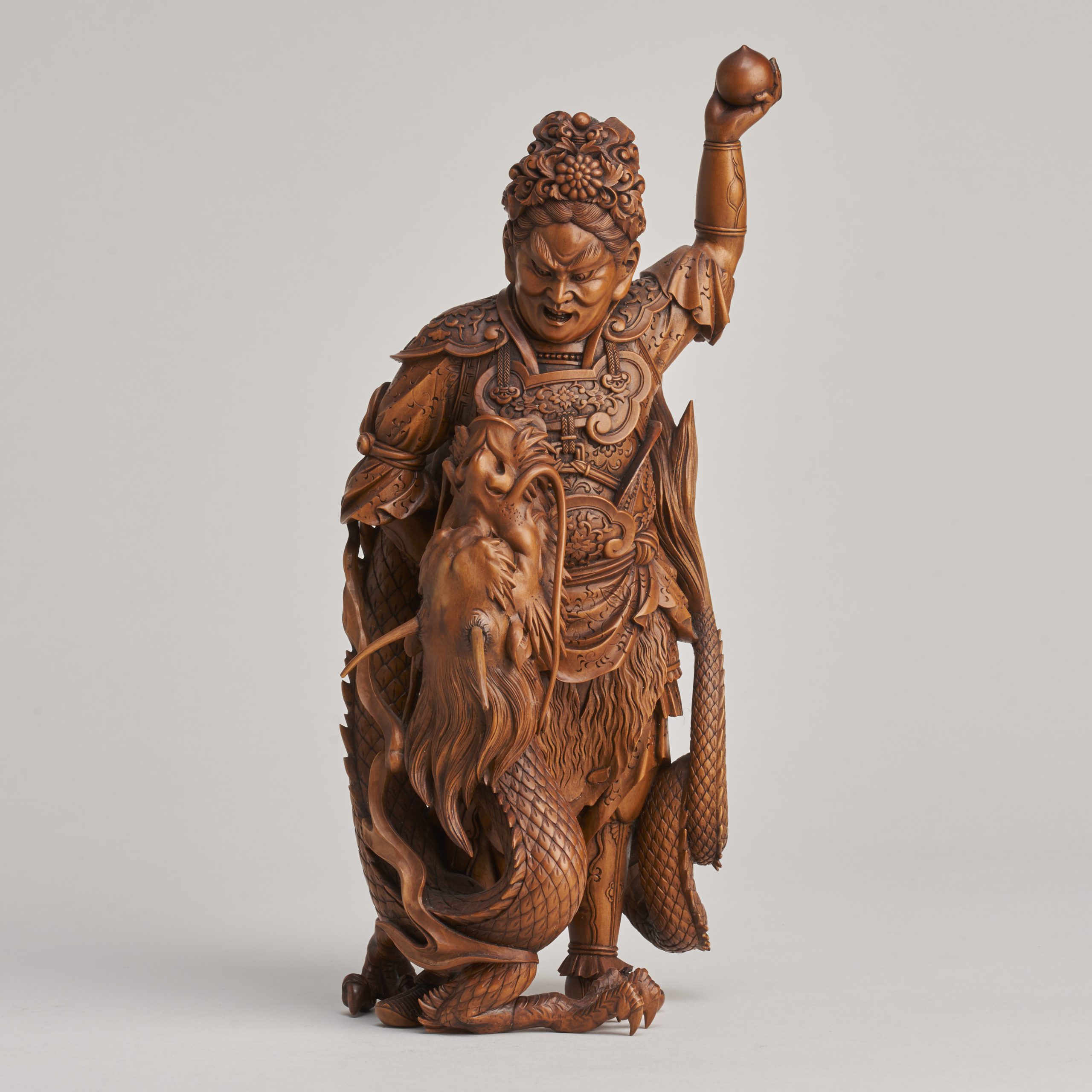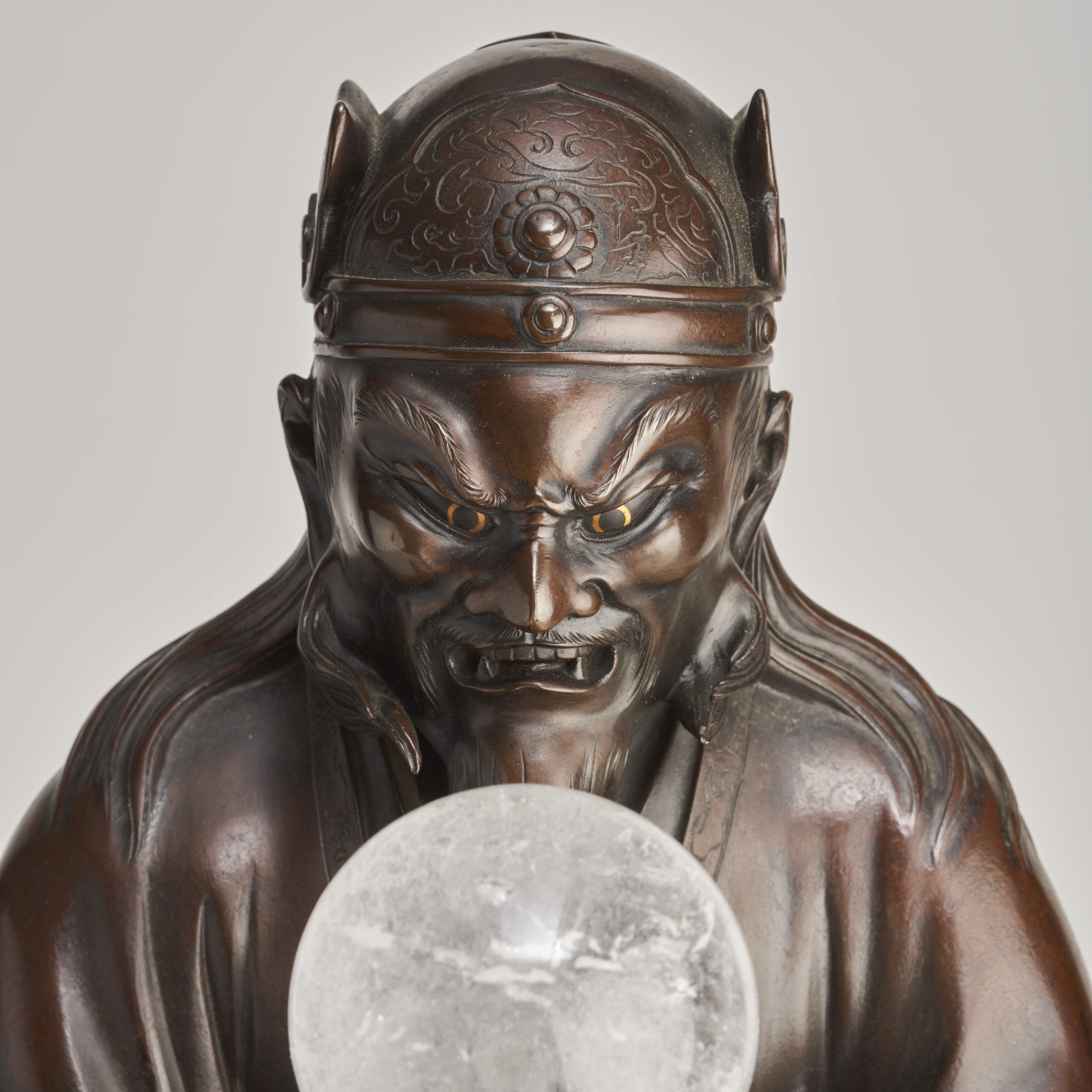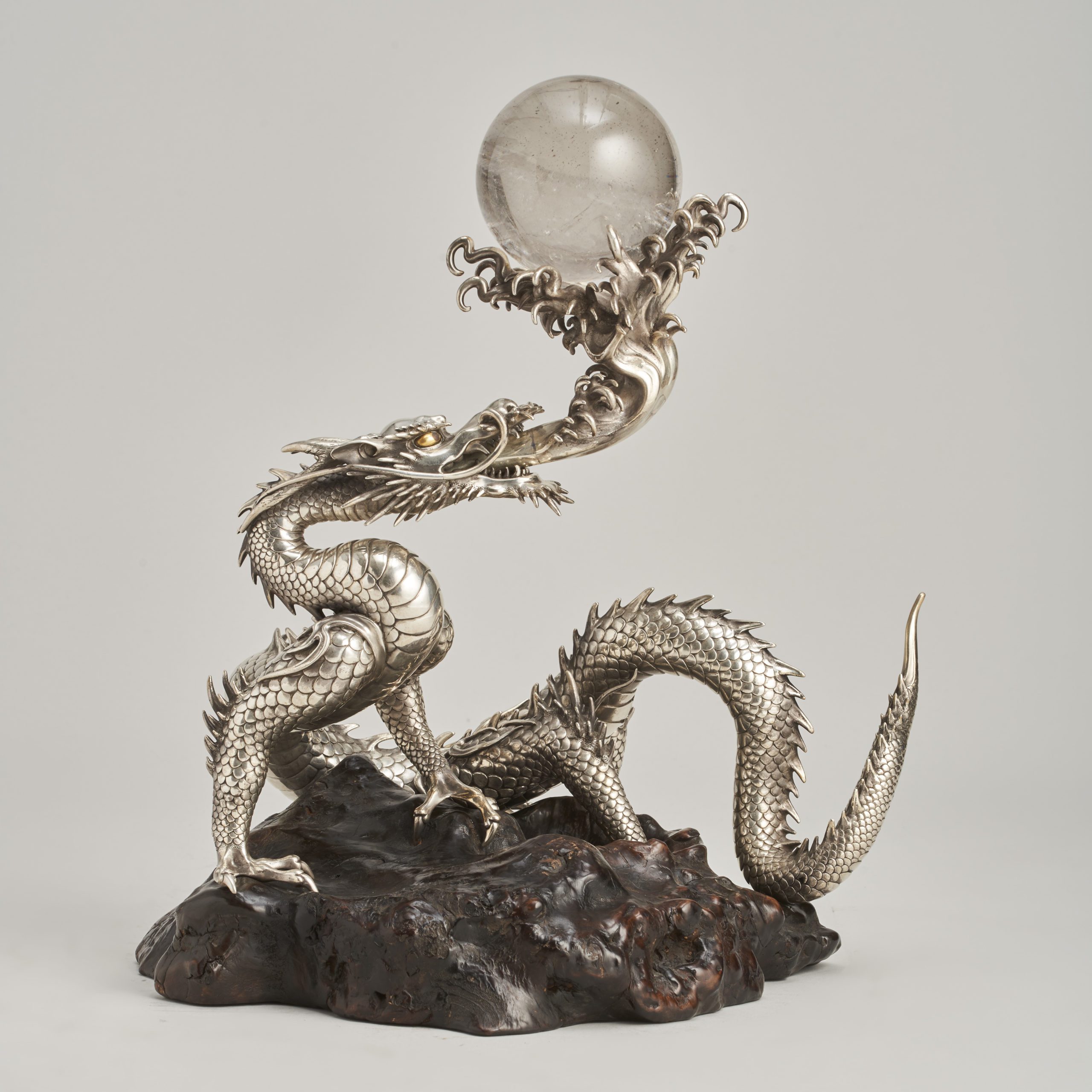One of the most iconic and celebrated Deities in Japanese legend is Ryujin, God of the Sea. In our latest blog about the stories and characters behind the art, we have looked at this awe-inspiring mythological Deity. We hope you enjoy the read.
(You can click on the photographs in the blog for more information about any of the pieces shown in the images.)
A fantastic late 19th Century wood carving depicting Ryujin and human & dragon form.
Ryujin, God of the Sea
As an island nation, Japan has historically relied heavily on the ocean both as a source of food and as a valuable defence against invasion. With this in mind it is natural that a Sea God would become a hugely important and symbolic Deity of ancestral Japan. Ryujin represents both the bounty and the threat offered by the Sea. He has sometimes been portrayed as a sinister force but for the most part he is seen as a Good God, a generous leader and a Patron of Japan.
One of eight dragons that originated in Indian mythology but found it’s way into Japanese legend via China and Korea, Ryujin is often depicted as having the ability to take both Dragon and Human form. Perhaps his most famous power is the ability to control the tides by raising or lowering a jewel. He is often depicted holding aloft the precious Tide Jewel which has come to represent power and Monarchy across Japan.
An almost demonic depiction of Ryujin staring into the tide jewel
He is also thought to be able to summon rain and thunder and there are shrines to Ryujin in many agricultural communities where rain is important and fishing villages where fair weather is critical to the safety of the fishermen.
The Japanese believe that he inhabits a large underwater Palace either beneath the Sea or in the lake of a large volcano. A large lake (Lake Biwa) North-East of Kyoto is widely thought to be home to Ryujin.
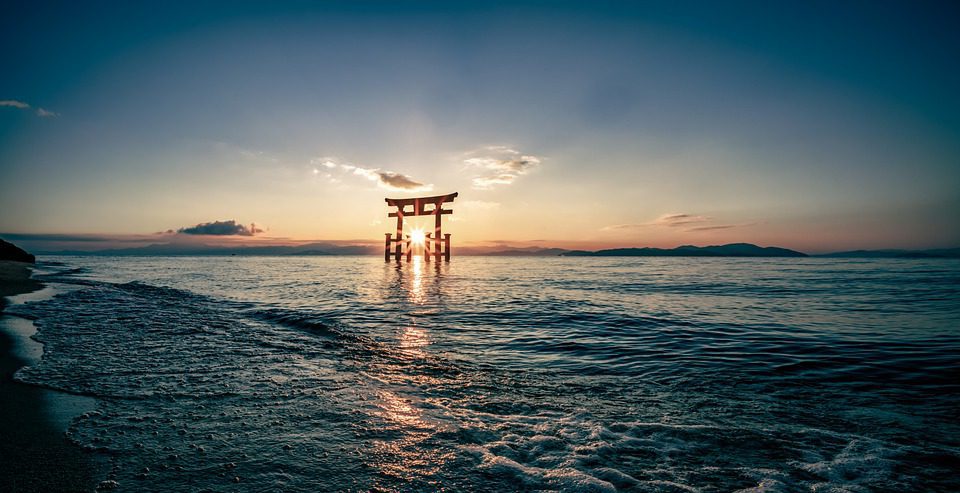
A Shinto gate on the shores of Lake Biwa.
Not content with being responsible for the tides and the weather, Ryujin is also thought to have a great and vast knowledge of medicine and this is the source of one of the most popular fables involving the Sea God…..
How the Jellyfish lost his bones
Ryujin has an army of attendants and servants made up of fish, turtles, Octopi, snakes and Jellyfish. One day, when looking for a medicinal cure for a nasty rash, he wanted to eat the liver of a Monkey. So he summoned a Jellyfish to go to the surface, procure the magical ingredient and bring it back to him. The jellyfish dutifully and somewhat reluctantly obliged and set off on his way.
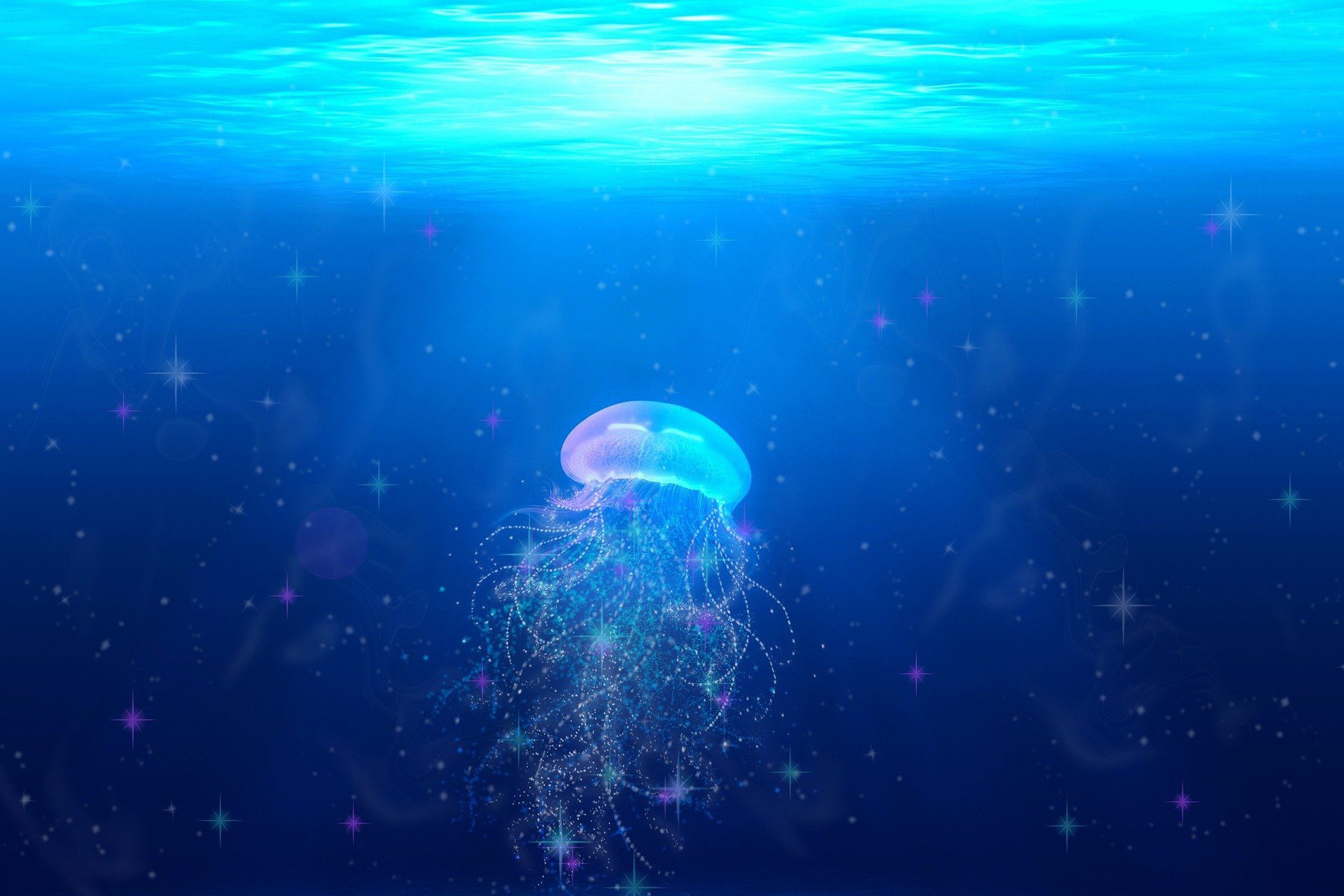
Eventually he found a monkey and asked him for his liver. The wise primate, (not wanting to give up one of his valuable organs,) tricked the jellyfish by saying that his liver was already in a jar in the woods and that he would go and fetch it.
A wise Monkey, as depicted on a pair of Meiji-era Iron panels.
Needless to say he didn’t return and the gullible jellyfish had to go back to his Master empty-handed. Disappointed and angry, Ryujin set about punishing the jellyfish beating him with such ferocity that his bones crumbled and turned to dust.
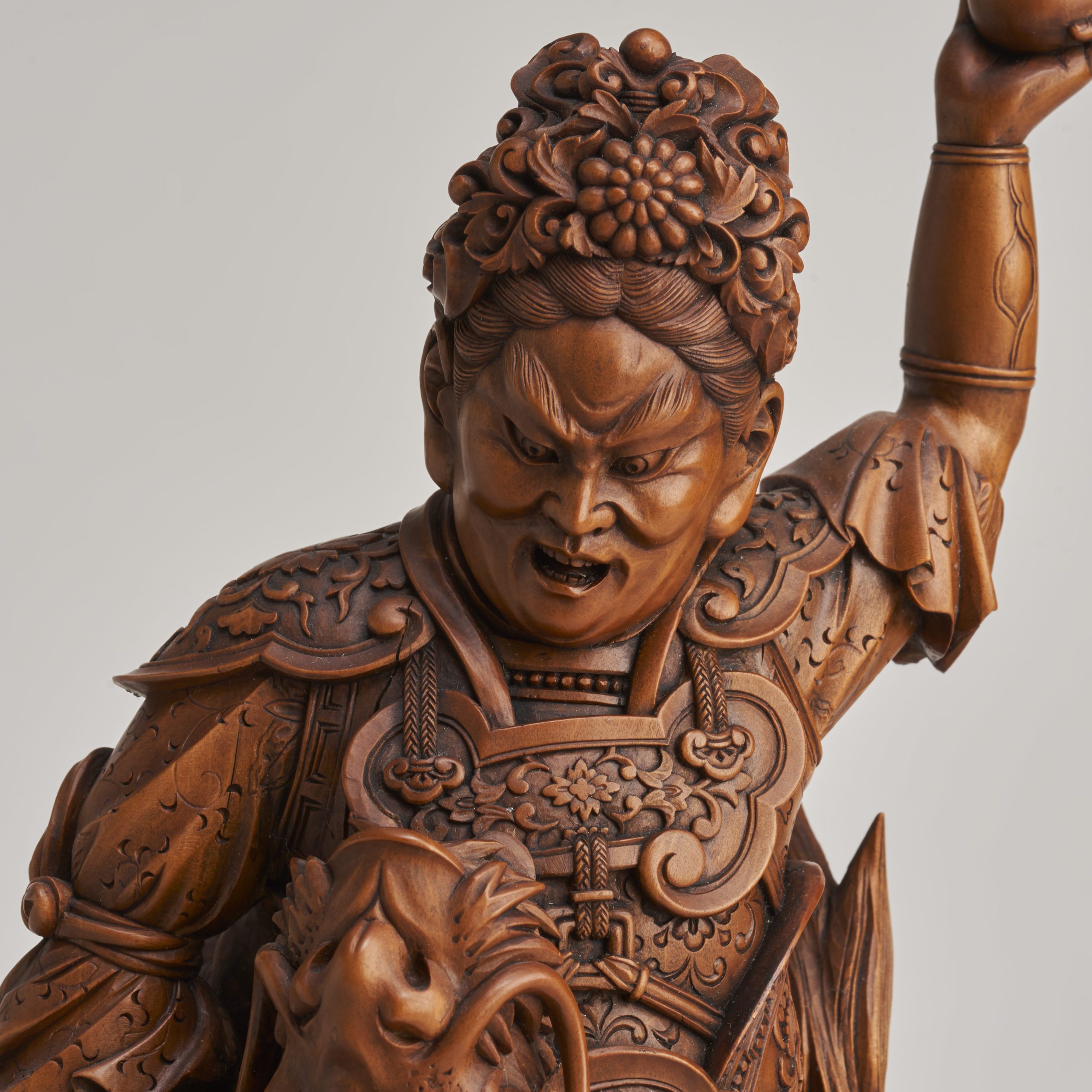
An angry looking Ryujin as depicted in this fantastic boxwood Meiji Okimono
From that day onwards the poor jellyfish and his successors would have no bones and this would be a bitter daily reminder of his failure to complete the simple task.

In more recent times, this fascinating and awe-inspiring Deity has become a pop-culture icon inspiring numerous fictional literary characters, anime figures and video game avatars.
We hope you have enjoyed this short-read. To read more “Stories behind the art” click here and to sign up for our quarterly newsletter where we explore other mythological characters, please click here and scroll to the bottom of the page.
A masterful Silver Okimono of a Dragon by Sanmi

